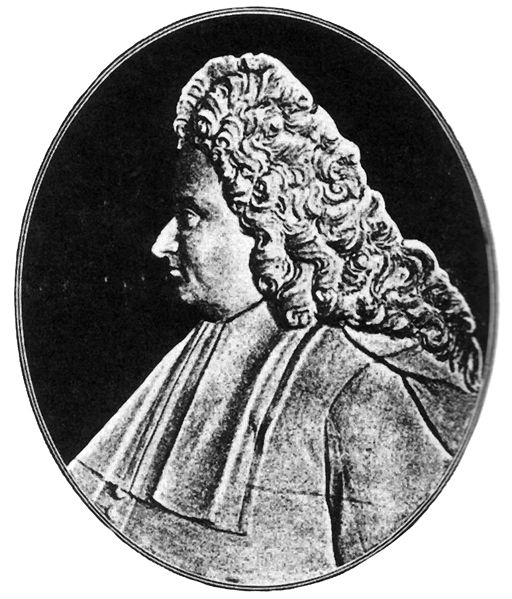<Back to Index>
- Anatomist Antonio Maria Valsalva, 1666
- Composer Alexander Sergeyevich Taneyev, 1850
- Commander in chief of the Parliamentary Army Thomas Fairfax, 3rd Lord Fairfax of Cameron, 1612
PAGE SPONSOR

Antonio Maria Valsalva (January 17, 1666 – February 2, 1723), was an Italian anatomist born in Imola. His research focused on the anatomy of the ears. He coined the term Eustachian tube and he described the aortic sinuses of Valsalva in his writings, published posthumously in 1740. His name is associated with the Valsalva antrum of the ear and the Valsalva maneuver, which is used as a test of circulatory function. Anatomical structures bearing his name are Valsalva’s muscle and taeniae Valsalvae.
Valsalva was born at Imola. The contemporary of Isaac Newton, Bach and Molière, he was educated in the humanities, mathematics, and natural sciences. After studies of the liberal arts, he studied medicine and philosophy in Bologna. He was taught by Marcello Malpighi, who is known as the founder of microscopic anatomy. Valsalva graduated from the medical school in 1687. In 1705, he was appointed professor of anatomy at Bologna. He was later chosen as president of the Academy of the Sciences. Valsalva taught Giovanni Battista Morgagni who edited Valsalva’s complete writings and published a biography on Valsalva, both in 1740.
In 1709, Valsalva married Elena Lisi. As he lost his health, he lost his sense of smell, but he recognized the prodromal symptoms, in the form of dyslalia, of the disease that would eventually cause his death from stroke at Bologna in 1723.
Valsalva was buried in the church of San Giovanni in Monte, Bologna. The Valsalva family donated a collection of dried anatomical specimens to be used for educational purposes to the Institute of Sciences founded in 1711. The wear of this material that followed possibly inspired the work of the Bolognese school of wax modeling and the artists Ercole Lelli and the Manzolini family. This new anatomic collection includes models of the heart and lungs and is today presented at the Museum of Anatomy.
Valsalva was described as a skillful surgeon and excellent physician, a meticulous anatomist with high scientific integrity, and a man of great kindness. Morgagni wrote ". . . there is nobody of those times who goes ahead of him, very few who are his equals." Valsalva both studied and taught in the fields of science, surgery, anatomy, physiology, and psychiatry. At a young age, Valsalva had successfully removed a dog’s kidney. He opposed cauterization in the treatment of wounds, and recommended humanitarian treatment of mentally ill patients. His main interest was the middle and internal ear, including the muscles of the external ear and the pharyngeal muscles. Valsalva named the Eustachian tube and described its function and that of its muscle. He showed the connection between the mastoid cells and the tympanic cavity, and made observations on physiologic and pathologic processes of the ear. De aure humana tractatus published in 1704 contains a description of the Valsalva maneuver and patency test of the auditory tubes.
On 25 May 2011, NASA reported that during the second spacewalk of Space Shuttle mission STS-134, astronaut Drew Feustel used a part of his Extravehicular Mobility Unit (spacesuit)
to make use of "a spongy device called a Valsalva that is typically
used to block the nose in case a pressure readjustment is needed."